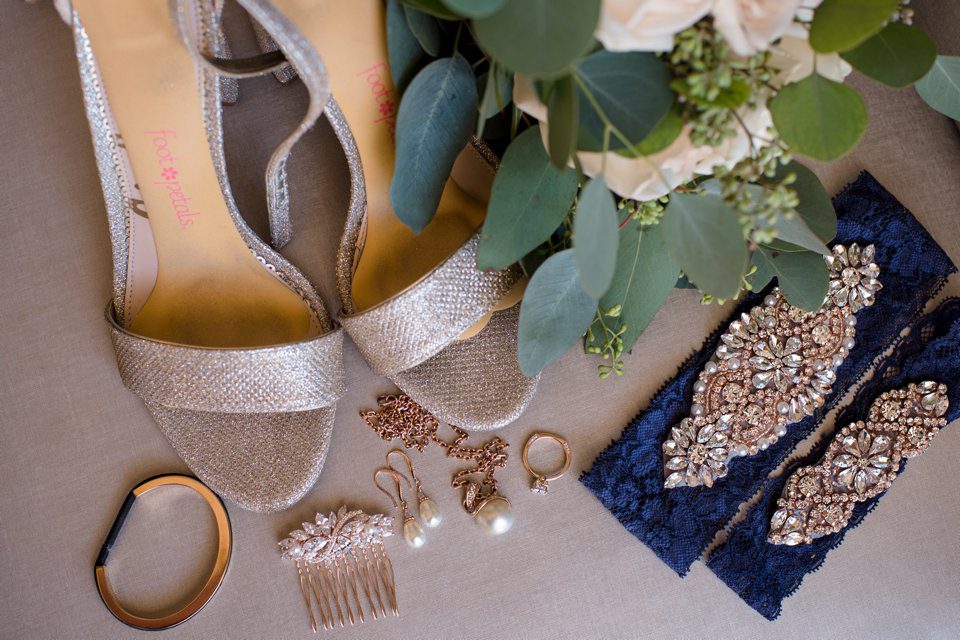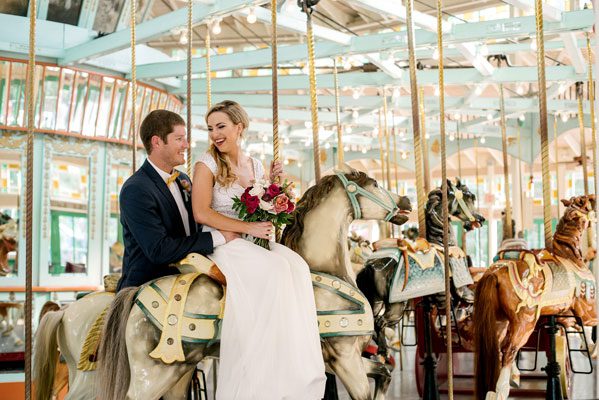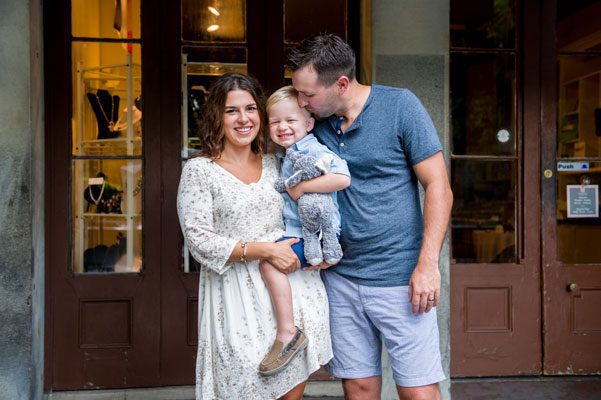You’ve dreamed about it, you’ve planned it down to the very last detail and now your wedding day is finally here! You’ve hired a photographer that you love to capture and preserve every last one of those details, and you want your wedding photos to be awesome, right?! If you have hired a professional photographer, they are going to know exactly what to do to give you beautiful images that you are going to love for a lifetime. But with a little input and planning from the bride, you can help your wedding day photos run smoothly and be absolutely amazing! Here are our 10 tips to make your wedding photographs awesome:
1. Timing – When scheduling your wedding day photography, it is best to schedule your photographer to arrive during the last 25 – 30 minutes of the bride’s hair/makeup being completed. The photographer will arrive and begin with your details, and capture the last finishing touches of your makeup being done. Most brides really don’t want a lot of images of them without makeup or of them with their hair in curlers, so capturing those last final few minutes is really all your photographer needs. Also, if hair and makeup run late, you have not used up your photographer’s time budget waiting on you to be finished.

2. Speaking of details – When your photographer arrives, they will begin by photographing your details. You can help this go smoothly by being prepared and having all of your details gathered in one place. Have your dress unwrapped and hanging on a nice hanger. If you want your bridesmaids dresses to be photographed, have them already unwrapped and hanging. Have all details such as your shoes, garters, jewelry, handkerchiefs, bridesmaids gifts, invitations, and sentimental details all gathered in one place. Be sure and point out the sentimental details. Having them in a shopping bag is good; having them laid out with items unpackaged is better. Bonus tip: Having two copies of your invitation suite will insure that we can capture both front and back!

 3. Light is essential – Keep in mind that good photography is about good light. As a matter of fact, the word photography literally means “to draw with light”. Choosing a get ready location that has lots of light may not be within your control, but if you have a choice, more light is always better. If booking a hotel suite, ask if you can have one with windows.If getting ready at home, try to have the get ready activities occur in an open room that has lots of natural window light. Of course, a professional photographer will be able to light any situation, but good natural light is always desirable.
3. Light is essential – Keep in mind that good photography is about good light. As a matter of fact, the word photography literally means “to draw with light”. Choosing a get ready location that has lots of light may not be within your control, but if you have a choice, more light is always better. If booking a hotel suite, ask if you can have one with windows.If getting ready at home, try to have the get ready activities occur in an open room that has lots of natural window light. Of course, a professional photographer will be able to light any situation, but good natural light is always desirable.

4. Control clutter – Try to keep the area where the bride will be putting on her dress free of clutter. Your images will ultimately be cleaner and much more appealing if clutter in the get ready room is kept in check. If all activity is happening in the same room, a great bridesmaid gift would be large accessory bags so that they can put all of their belongings in one bag and then stow them quickly when the room needs to be cleared out.

5. Timeline – Pay attention to your timeline or appoint someone, such as your maid of honor, to keep an eye on the time. Photographers work very closely with their clients to make sure they have enough time scheduled to accomplish all the photographs that they want. However, if the timeline starts to go astray, adjustments and choices have to made about what to eliminate and photography suffers. Be sure to allow adequate time to put on your dress and plan for an extra 15 minutes to lace up a corset back. (Need instructions on how to do that? Click here.) After the dress is on, we like to photograph the bride being helped on with her garters, shoes and jewelry and then take a few of the bride alone. This accounts for about 20 additional minutes after the dress is on. You can estimate the total amount of time you should book your photographer here.

 6. First Look – For the absolute best photos of the bride and groom together on the wedding day, schedule a first look. This allows the photographer to capture the groom’s reaction to seeing the bride for the first time, then allows a little time for the bride and groom to be photographed together in a little mini-session before the wedding or to photograph the whole wedding party together before the wedding. If the bride and groom choose not to first look and to see each other for the first time walking down the aisle, the only time for bride and groom photos alone is between the wedding and the reception. This can certainly be accomplished but it is often rushed and cuts into reception time. Another advantage to having a first look is that family formal portraits can be scheduled before the wedding. This allows everyone to go directly from the wedding to the reception.
6. First Look – For the absolute best photos of the bride and groom together on the wedding day, schedule a first look. This allows the photographer to capture the groom’s reaction to seeing the bride for the first time, then allows a little time for the bride and groom to be photographed together in a little mini-session before the wedding or to photograph the whole wedding party together before the wedding. If the bride and groom choose not to first look and to see each other for the first time walking down the aisle, the only time for bride and groom photos alone is between the wedding and the reception. This can certainly be accomplished but it is often rushed and cuts into reception time. Another advantage to having a first look is that family formal portraits can be scheduled before the wedding. This allows everyone to go directly from the wedding to the reception.

 Another good alternative if the couple decides not to do a first look is to schedule a post bridal wedding session, which tend to be very relaxed because the pressure of the wedding day is off and there is time to get some fun and really creative shots.
Another good alternative if the couple decides not to do a first look is to schedule a post bridal wedding session, which tend to be very relaxed because the pressure of the wedding day is off and there is time to get some fun and really creative shots.
 7. Formal Portraits – Getting your wedding party and/or family together to take formal portraits is, as we like to say, akin to cat-herding. Once people begin enjoying the reception, they simply do not want to come stand for a formal portrait. Our studio finds that the most efficient way to handle these is to take them immediately after the ceremony, and to take them in the place where the ceremony took place. For example, if the ceremony is in a church, we ask that the couple turn back around after the recessional and go to the altar where we will photograph the couple, the bridal party and the extended family formals. The couple can move this along by providing the photographer with a list of formal family shots ahead of time and to appoint someone who knows the people on the list to be a “wrangler”. Plan about 5 minutes for setup and bridal party, and then about 1 1/2 minutes per each different family grouping. Therefore bridal party and 10 family formals = 5 + (10X1.5) = 20 minutes. Make sure that everyone who is included on the list knows that they are supposed to be photographed which will save valuable hunt time.
7. Formal Portraits – Getting your wedding party and/or family together to take formal portraits is, as we like to say, akin to cat-herding. Once people begin enjoying the reception, they simply do not want to come stand for a formal portrait. Our studio finds that the most efficient way to handle these is to take them immediately after the ceremony, and to take them in the place where the ceremony took place. For example, if the ceremony is in a church, we ask that the couple turn back around after the recessional and go to the altar where we will photograph the couple, the bridal party and the extended family formals. The couple can move this along by providing the photographer with a list of formal family shots ahead of time and to appoint someone who knows the people on the list to be a “wrangler”. Plan about 5 minutes for setup and bridal party, and then about 1 1/2 minutes per each different family grouping. Therefore bridal party and 10 family formals = 5 + (10X1.5) = 20 minutes. Make sure that everyone who is included on the list knows that they are supposed to be photographed which will save valuable hunt time.
8. Transitions – Make sure that your event coordinator understands #3 above, and that lighting needs to be set up when you make transitions. This is especially applicable to when the bride and groom make their entrance and do first dances. Coming from outdoors to indoors requires a few minutes of lighting setup time, so when you are planning your entrances, make sure to account for this. A great way to handle this is for the bride and groom to go into a back entrance for dress bustling when arriving at the reception, during which time the photographer can be setting up the lighting and be ready to capture the big entrance. 
9. Surprise your guests, but don’t surprise your photographers – If there is something special that you have planned, like choreographed dances, special toasts, customs or ceremonies, be sure to let us know. While the element of surprise can be a lot of fun for your guests, your photographer wants to make sure they don’t miss a thing for you. Knowing what you have planned ahead of time assures that they will capture it all!
10. Try to relax and have fun! We want nothing more for you than for you to have a wonderful day and to capture the day as it unfolds. Know that we will adjust, and, as we like to say “pivot” no matter what happens … even if that means dancing in the rain with you!






















misterdebsI love these tips! Thanks so much for sharing your wisdom.